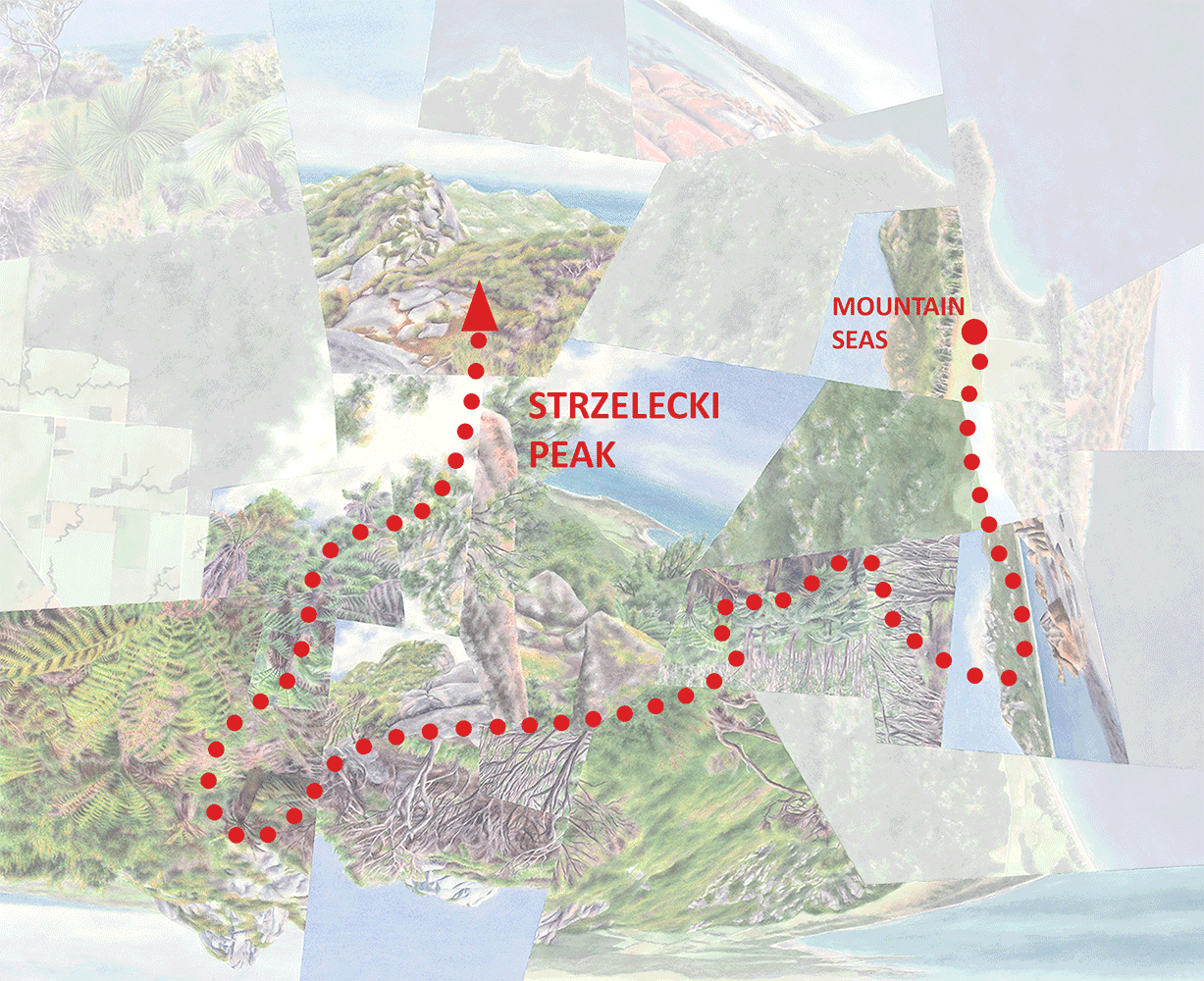Approach, watercolor on paper, 44”x38.”
Since we’ve been in Chile for the last few posts, today I’ll lead you through another worldview inspired by my 2019 trip there. This one is based on Villarrica Volcano in the Lake District, a region of the country well-known for its scenic lakes, forests, and mountains. The work, and the place, combine two of my favorite themes—ecological edges/gradients and accessible volcanoes.
On the ecological theme, Villarrica is located in the country’s temperate rainforest region—though at the northern edge of it, and the forests felt dry in comparison to those of Patagonia and Chiloé Island farther south. They’re made up mostly of Nothofagus or “southern beech” species (a genus also common in the rainforests of New Zealand), reaching towering heights in the lower zones but becoming shrubby and contorted approaching the mountain. Since the elevation gain is relatively modest, the change in character is probably as much the result of rockier substrate as of cooler temperatures.
The bottom part of the watercolor, moving roughly from lower-right to center-left, captures that character change along a several-hour hike at the base of the volcano; it ends at one of many “parasitic craters” (tiny cones around the perimeter) where the forest starts to give way to lava fields. The braided channels in the aerial fragments were formed by mud flows during past eruptions.
Approaching the volcano and climbing a bit, the forest becomes shorter and bushier…
…and increasingly wind-blown.
The rest of Approach captures the half-day climb to the volcano’s summit, which begins from a separate spot at the base of the mountain—or technically on the mountain slope, since a chair lift allows you to bypass the lower part. It can only be done as part of an organized climb, and while I’d still classify it as a hike, it does require crampons, ice axes, and other gear.
The volcano is still active—last major eruption was in 2015—and gas masks are needed at the crater rim because of the sulfur dioxide. I thought I could pull mine down briefly to take a photo, and I’ll say it isn’t fun to take a breath expecting oxygen but getting something else.
Villarrica is quite different from the tiny, quiet, “domesticated” volcanic cones that I’m typically inspired to capture—and compress even further—on paper. But being able to peer into the giant, active crater at all, and to ascend and descend the mountain in just a few hours (thanks partly to the chair lift and being able to sled/slide all the way down) did seem to shrink it just a little, giving me some of that feeling of empowerment that draws me to usually much tamer volcanoes. Those mini-volcanoes can no longer hurt you, but climbing this one is like “conquering” any daunting or potentially dangerous physical feature—the whole point is that you might not have succeeded.
The title Approach comes from the work’s illustration of two distinct journeys that are each in a sense cut short. The forest hike approaches the foot of the mountain but doesn’t climb it or even quite reach the snow line, and so on paper I was forced to knit together the forest and mountain components with aerial and distant views. And while I find the experience of standing at the bottom of a crater to be particularly exhilarating when it’s possible, the Villarrica summit hike reaches the edge of the crater but for obvious reasons doesn’t enter it. (Our time at the edge was itself brief and a bit harrowing, with the gas and the cold.) I think in general the title reflects the fact that this work, unlike most of my others, conveys my sense of feeling small—verging on overpowered—rather than capturing the unexpected “smallness” of a landform or environment we typically perceive as unbounded or overpowering.
Darren
Detail, forest hike.
Detail, summit hike.
























